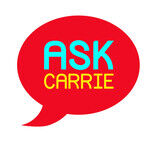About a month ago, I wrote a column about a trip I took on behalf of the Social Security Administration to Poland in the 1990s. To be honest, I thought readers would criticize me for writing it because I really wasn't doing what I'm supposed to be doing with this column — answering readers' questions about the complexities of the Social Security program.
But surprisingly, I got more positive responses to that column than to any other column I have written in a long time. And many of you asked me to share more stories from that trip. So that's what I'm doing today.
First, here is a quick recap of how that trip came about. In 1994, Polish Social Security officials were visiting our Social Security Administration headquarters in Baltimore, Md. As chief editor of all the publications the SSA made available to the public, I was asked to address the group on how we did that.
At lunch time, on a whim, I asked one of the Polish officials (his name was Jan) if he wanted to take a drive with me to the "Little Poland" neighborhood of Baltimore. We ended up having a great time. In fact, my guest had a really great time as he drank vodka for hours in a Polish bar — sharing stories of their homeland with Polish-born Baltimore citizens.
Several hours later, I brought Jan, who was more than a little bit tipsy, back to our meetings, where I promptly got chewed out by my superiors. I assumed Jan was a mid-level manager like me. But it turned out he was the head of the entire Polish Social Security system. In fact, he was a rather high-ranking member of the Polish government.
Long story short. Instead of getting in big trouble for getting him drunk, Jan invited me to Poland to conduct training sessions for the public affairs employees of Zaklad Ubezpieczen Spolecznych, or ZUS, the Polish Social Security agency.
So a couple of months later, off I went to Warsaw, an interesting blend of rather ugly Soviet-era buildings with hints here and there of colorful Western influences — like McDonald's, Wendy's and a big IKEA store. (Poland was just starting to come out from under decades of Russian rule.) There was also a beautiful old town core to the city. All the buildings looked like they were many centuries old. But actually, they were all built in the 1950s, after World War II bombs had almost completely obliterated the city. Very wisely, city planners decided to rebuild the city center to look like it did before the war.
I was expecting to stay in a boring hotel that was a remnant of the Soviet era. Instead, Jan put me up in the very beautiful Hotel Sobieski. (I just checked it out online. It's still there, although now it is owned by Radisson.) One great memory of that hotel was the free breakfast. It wasn't just some bland scrambled eggs and sausages. Instead, it was table after table of the most delicious and lavish breakfast offerings I have ever experienced — before or since. I really had to pinch myself to remind me that I was in Warsaw, Poland, and not in Paris or London or New York City!
The ZUS training facility was in a beautiful building that looked like a French chateau in the tiny village of Osuchow, about 30 miles south of Warsaw. It was quite a transformation. In the short drive, we went from an emerging modern city to something right out of medieval central Europe. For example, I saw dozens, if not hundreds, of old women stooped over in fields picking potatoes and throwing them into big burlap bags on their backs. At the training facility, people were cleaning leaves off of sidewalks. But instead of a couple of guys with big loud leaf blowers, there were maybe 30 old women with brooms. But not brooms like you would think of them. Instead, they were just some strands of long hay-like straws tied to the end of sticks.
I was there to train the ZUS public affairs officials on how to explain and "market" their Social Security programs to the Polish citizenry. After decades of Soviet domination, it was a new experience for both the government and its people to have a more open and publicly financed social insurance system, not too much different from our own. And for that matter, not different from many other worldwide Social Security programs.
The big main training room was set up like a mini-United Nations. By that, I mean everyone wore headsets. I would speak in English. Two translators in a small booth in the back of the room would turn what I said into Polish. And that is what the trainees heard in their headsets. And if they asked me questions (in Polish, of course), I would hear the English translation in my earpiece.
Here is an interesting side piece about one of the translators. She was in the process of buying a new car. As I explained in my prior column about this trip, Poland at that time was going through a period of hyperinflation. The Polish currency is the Zloty. A 100,000 Zloty note was worth about five U.S. dollars. Also, at the time, the Polish banking system was just recovering from Soviet rule, and there was essentially no such thing as bank loans or credit. So one day, this woman came to the training center with a big shopping bag with literally billions of Zloty notes in it! And sure enough, the next day, she showed up for work with a shiny new car — and an empty shopping bag!
I used to enjoy lunchtime walks around the tiny village of Osuchow — staring in amazement at all those old women in the fields picking potatoes. A favorite destination was the village's version of a 7-11 store. But instead of Slurpies and hot dogs, this place offered Vodka slushies and herring on a stick!
I'm usually pretty good at picking up foreign languages. But Polish, with its cacophony of consonants, was a tough one. After a couple of weeks in the country, I could barely manage "dzien dobry" (good morning), "do widzenia" (good bye) and "dzieki" (thank you). But on one of those lunchtime walks I mentioned, I saw a woman in her front yard with a dog. She was giving the dog a whole series of commands, about a dozen of them (in Polish, of course) that obviously meant things like "sit," "heel," "stay," "roll over," "shake," etc, because the dog was dutifully doing all those things.
When I got back to the training class, I got up in front of the group and told my students what I had seen and how embarrassed it made me. One of the students asked, "Why?" And I explained, "I was so humiliated that a dog knew more words in Polish than I did!"
One final observation. I'm looking at a picture of me taken on that trip — again, in the early 1990s. I'm lugging around a big, heavy suitcase. It wasn't until a number of years later that rollers were added to suitcases. Why in the world did it take us a hundred years to figure out we could put wheels on our luggage?
If you have a Social Security question, Tom Margenau has two books with all the answers. One is called "Social Security — Simple and Smart: 10 Easy-to-Understand Fact Sheets That Will Answer All Your Questions About Social Security." The other is "Social Security: 100 Myths and 100 Facts." You can find the books at Amazon.com or other book outlets. Or you can send him an email at [email protected]. To find out more about Tom Margenau and to read past columns and see features from other Creators Syndicate writers and cartoonists, visit the Creators Syndicate website at www.creators.com.
Photo credit: Ostap Senyuk at Unsplash






View Comments